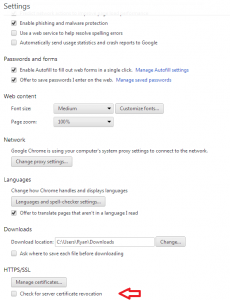[ This is a re-post of a article I wrote for the GlobalSign corporate blog, you can find it here]
It seems every month a new flaw is identified in SSL, and while that’s a slight exaggeration, after a while one starts to ask the question – is SSL broken? My answer would to that question would be no, but the protocol is nearly twenty years old and even though it now carries a new name (TLS) it also carries much of the baggage of the past in its design.
Despite this fact, my faith in TLS is stronger today than it ever was. My reasoning is simple – today we understand the strengths and weaknesses of this protocol better than we ever have. It is continuously reviewed by the world’s best engineers and cryptographers, trying to find the bad assumptions their predecessors made, strengthening it in response to identified weaknesses, and modernizing it to use the strongest forms of cryptography available.
This continuous investment in this foundational technology gives me faith.
Today another attack on TLS was made public. “Lucky Thirteen” is a derivative of the work of French cryptographer Serge Vaudenay (Padding Oracles against CBC based ciphers – 2010), though unlike Vaudenay’s attack, Lucky Thirteen uses a known Timing Attack previously believed to be impractical. A successful application of this attack enables an attacker to decrypt your SSL communications.
Unlike other recent attacks, such as BEAST, Lucky Thirteen requires a server-side fix. This means that complete and effective protection against this attack will require all webservers to be updated or patched.
That said, it is possible to mitigate the attack by removing CBC cipher suites, since the attack is against SSL/TLS’s use of CBC. But what to use in its place? The consensus of security researchers is to adopt suites based on AES-GCM, and while I agree, this has one problem – the large population of clients that do not yet support it.
This recommendation is complicated slightly by the BEAST attack from last year, the resolution of which required a client side fix which has, in all likelihood, not yet been deployed ubiquitously. As such, I still recommend prioritizing the older and less secure RC4 based suites above AES-GCM since it addresses both issues.
But should you be worried? It depends. If you are using TLS (and not its little brother DTLS) I would say your best bet is to walk calmly to the nearest exit, and use this as an excuse to ensure you are following industry Best Practices when deploying SSL – if you’re not, this attack is the least of your worries. Specifically I would recommend visiting the SSL Configuration Checker and make the critical (red) and important (yellow) configuration changes it suggests.
I would also encourage you to deploy HTTP Strict Transport Security on your site since the attack this mitigates (SSL stripping) is much easier for an attacker to execute.
The good news is that if you were already following the advice of the SSL Configuration Checker you were prioritizing RC4 over other ciphers and most sessions to your server were resistant to this attack. This doesn’t mean you should not be deploying the patch to this issue, you just don’t need to do so in a crazed rush.
So are there any lessons we can take away from this? Of course there are. As a server operator, I would say this finding underscores the importance of regularly reviewing your server configuration to ensure that it follows industry best, and that you are always operating the most recent and stable release of your web server.
If you want a more technical walk through of this attack, I highly recommend this post by Mathew Green on TLS Timing Oracles or this one by Adam Langly.

